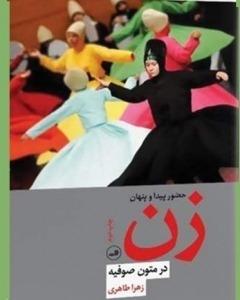
Abstract
Hozur-e peydavapenhan-e zan dar mutun-e sufiyyeh (The Absence and Presence of Women in Persian Sufi Texts), published by Nashr-e Sales, Tehran, Iran.
In the book, Dr Taheri documents the position of women in Persian mystical literature from the beginning of the Islamic era to 1900. She writes: In the history of Sufism, the presence of mystic women have been ignored and they have largely remained invisible. A long list of Sufi treatises have recorded the life and works of Sufis, with almost no remarks on mystic females. Through a careful investigation of mystical texts, we can find traces of lives and doctrine of Sufi women who have been left unknown, unrecognized, anonymous, and even nameless. Most of the male authorities on Sufism believed that women are unable to attain the higher stages of spirituality, therefore ignored or concealed women’s presence and their teachings under a veil of obscurity. In Persian Sufi literature, however, Attar (d. 1221), Rumi (d. 1273), and Jami (d.1492) have opened a broader space for the feminine, used feminine images and metaphors with a great significance, and related women’s spiritual experiences in their Sufi tales, anecdotes, verses of poetry, and sacred biographies (tazkerah).
The book was first was published by the Institute of Asian and African Studies in Tokyo in 2007. It was then published by Nashr- e Sales in Tehran, in 2011. This edition has sold out and so a third edition has been produced.